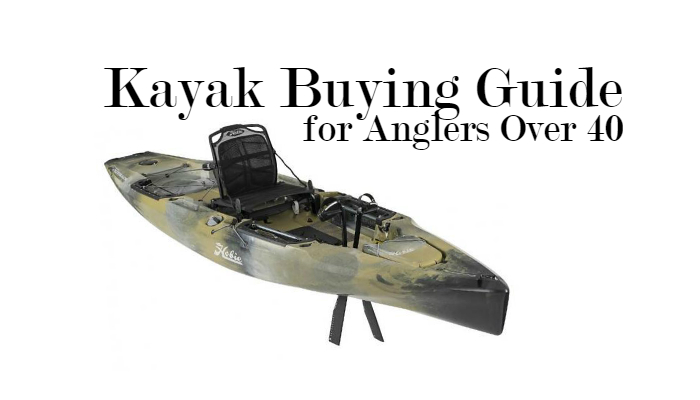
Not every person looking to buy their first kayak is a young whippersnapper of 20 or even 30. Lots of new kayak anglers are in their 40s, 50s, and 60s. Allow me a moment, to be frank. As an angler who falls into one of those age ranges, our needs are different than what we would have needed at 20. That prompted the need for this article: The Kayak Buying Guide for Anglers Over 40.
Before we can get into specific brand and model recommendations, certain features and available options need to be discussed. Let’s talk about seats, stability, weight, and propulsion.
 Seats
Seats
Seats vary across all models. While some are floppy, clip in style seats meant to give a tiny bit of back support and that’s about it, other models of seats have multiple lumbar and back adjustments with height options as well. If you’re like me, once you’ve crossed the 40-year threshold, your back starts to ache without some support. This means avoiding clip in seats that don’t have a frame. Just don’t do it. And while a frame seat is better, they are most definitely not all built the same. Frame seats with no back contour, (think old beach chair), offer much less ergonomic support than a frame seat with a contoured frame to cradle your back.
You’ll also want to pay close attention to adjustment points in the seat. If you are a heavier angler, a cheaply made seat may sag in the seat pan and you’ll be sitting on an uncomfortable crossbar all day. Not ideal.
Good seats typically mean a more expensive kayak because of the detail and ergonomics that have gone into the design.
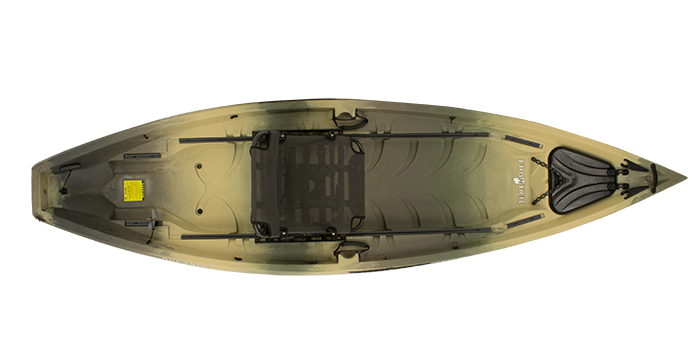 Stability
Stability
Another moment of honesty here, my balance is not what it used to be. Getting up from a seated position too quickly can make me a little dizzy. If I plan on standing or at least have the option in a kayak, I need it to be stable. So how do you determine stability in a kayak?
In general, a wider kayak will offer more stability. A 41″ wide kayak will almost always be more stable than a 30″ wide kayak. This can vary however based on the hull design. A catamaran style hull uses channeled water to add stability and reduces the need for a super wide kayak. Another factor is the person standing or sitting in the kayak.
We are all made differently and our centers of gravity differ. Some anglers are top heavy, some middle heavy, others bottom heavy, and a few are well built, evenly spaced specimens who probably will never read this article because they don’t identify as older. Just because your friend who weighs the same as you can stand in his kayak, it doesn’t translate to your abilities. Maybe he’s only 5’5″ and you are 6’2″. Height can play a key as well as it gives the weight a longer plane to be distributed along.
The best bet is to demo to test stability but if you can’t, get something at least 32″ wide.
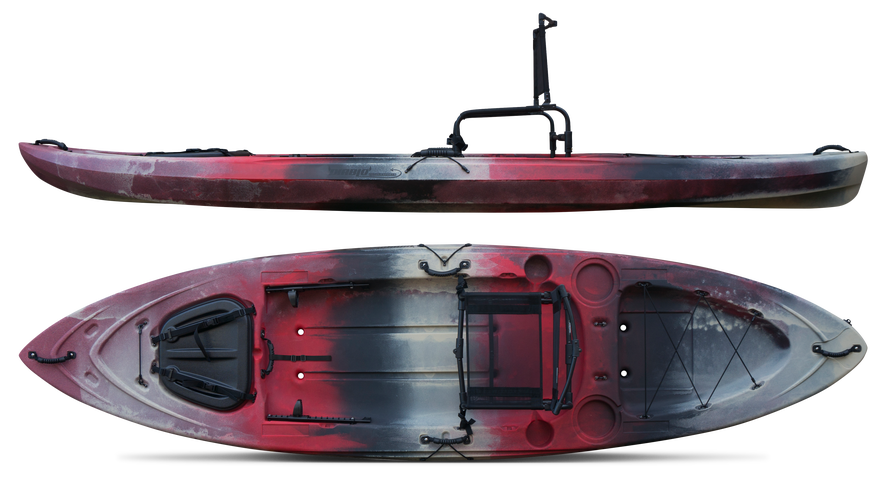 Weight and Transport
Weight and Transport
The weight of your kayak is very important to consider, and it needs to be paired with the transportation mode you’ll be choosing. A kayak that weighs 140 pounds is going to be difficult to load and unload without a trailer or assist devices (which is an extra expense). For me, after nearly 15 years of paddling kayaks and thousands of miles, my shoulders are not at all what they used to be. Hoisting a kayak up onto a roof of a vehicle or a tall ladder rack just isn’t in the cards. Having a truck that I can use a bed extender with however makes it much less of a burden to have a heavier kayak.
Think about how you will move your kayak from location to location and then figure out what weight you can manage based on your current health conditions.
 Propulsion
Propulsion
This is a big one. The four main modes of propulsion you’ll see on kayaks are paddle, pedal, sail, and motor. Think about what will work best for you, when considering where you will fish most often and what your current health status is. Specifically, are your knees in really good condition but your shoulders are shot? Are your shoulders and your knees bad? What would be most difficult for you to physically do? Whichever that is, rule it out. For many people, an electric motor added to a pedal or paddle craft works great for a mixture of exercise and a safety net (the motor) in case they tire out or catch an injury. Sails aren’t utilized across most of the country so we won’t be diving into them for this article.
Kayak Buying Guide
These suggestions will help you narrow down your choices by offering a few suggestions from each category of consideration above.
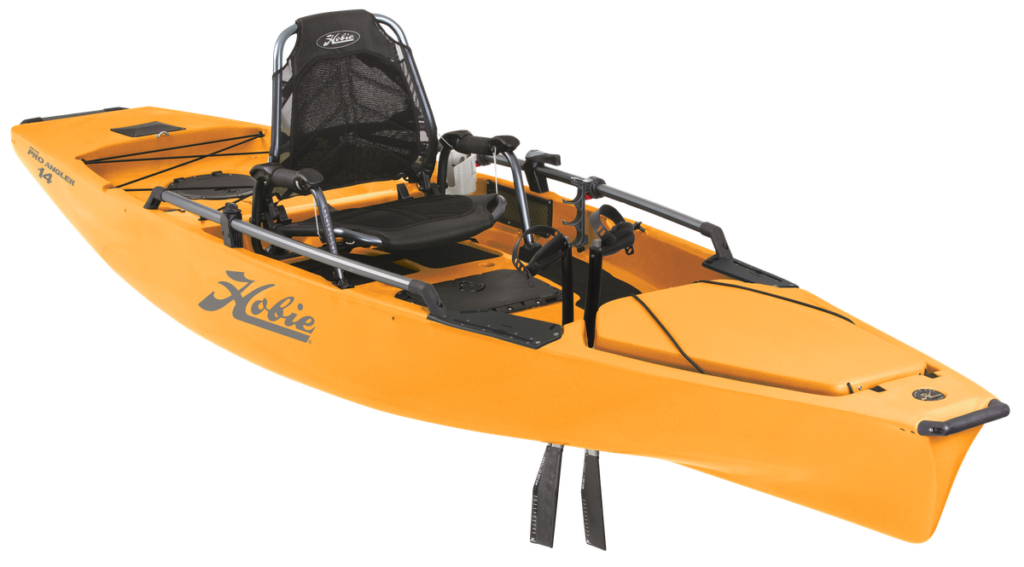 Ranking Seats
Ranking Seats
The Hobie Pro Angler 12/14 has the best seat on the market. It’s comfortable, has tons of adjustment points, and offers enough comfort for all day on the water.
The Bonafide SS127/107 has what I would consider the best seat on a paddle kayak. Again, lots of adjustment points in both the seat and back, with a well-contoured seat frame to allow you to comfortably wear a PFD while seated and still paddle.
The NuCanoe Pursuit gets an honorable mention here. It has a pretty comfortable seat with several adjustment points but also has the option of a swivel base which allows the seat to turn 360 degrees, making fishing out of the side or back of the kayak very easy.
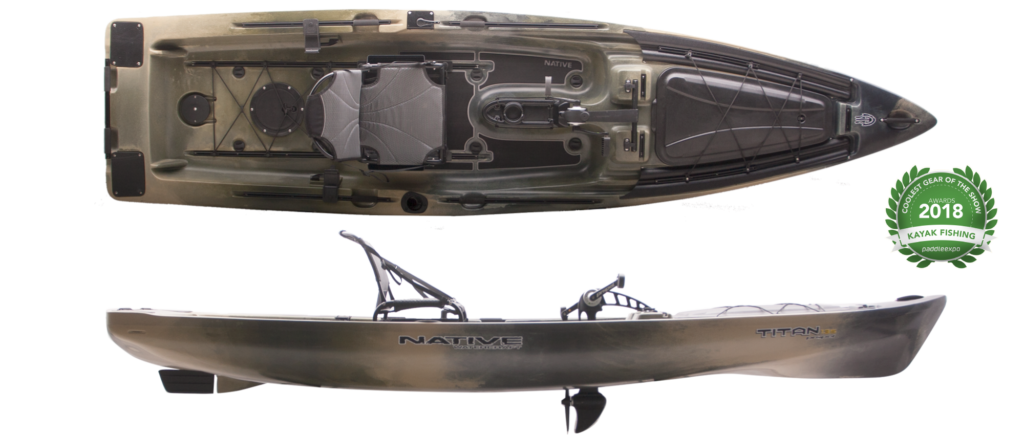 Ranking Stability
Ranking Stability
When we talk about width and hull design, the five main players in stability all come in over 32 inches.
The Native Titan 13.5 is the top dog in the width category at 41.5″ wide. With the Propel Drive, anglers use their feet to manuever this kayak through the water.
The NuCanoe Frontier 12 is one of, if not the widest paddle kayak on the market. It boasts a 41″ wide beam and offers a squared off stern which is ready for an electric motor to clamp on and go.
The Hobie Pro Angler 14 is a kayak that has a width of 38″. Long and wide, the PA14 gives the angler plenty of room to move about the kayak and to help move it along in the water is a pedal system known as the Mirage Drive. Anglers use their feet to propel the kayak.
Another paddle propelled kayak that hits the width and stability marks is the Diablo Amigo. Coming in at 38″ wide, the Amigo is a river raider’s dream.
The Jackson Big Rig is popular among paddle craft anglers and soon to be pedal anglers as well. The Big Rig comes in at 38″ wide and a secondary stability that helps in turbulant water.
The Bonafide SS127 gets an honorable mention here. While it only measures a beam of 34″, the tri-cat hull makes for a stable platform that acts like a much wider kayak. The Bonafide is also a paddle kayak.
Ranking Weight and Transport
I won’t make any specific recommendations here as every transport situation seems to differ.
If you are car topping your kayak (putting it on the roof of your vehicle) I’d recommend staying under 80 pounds.
For a bed extender transport mode, a kayak under 100 pounds usually works best.
Over 100 pounds, I’d really consider some trailer options. You don’t have to but you may really wish you had in short order.
Ranking Propulsion
The best in class models for each mode of propulsion, at least how I see it is as follows:
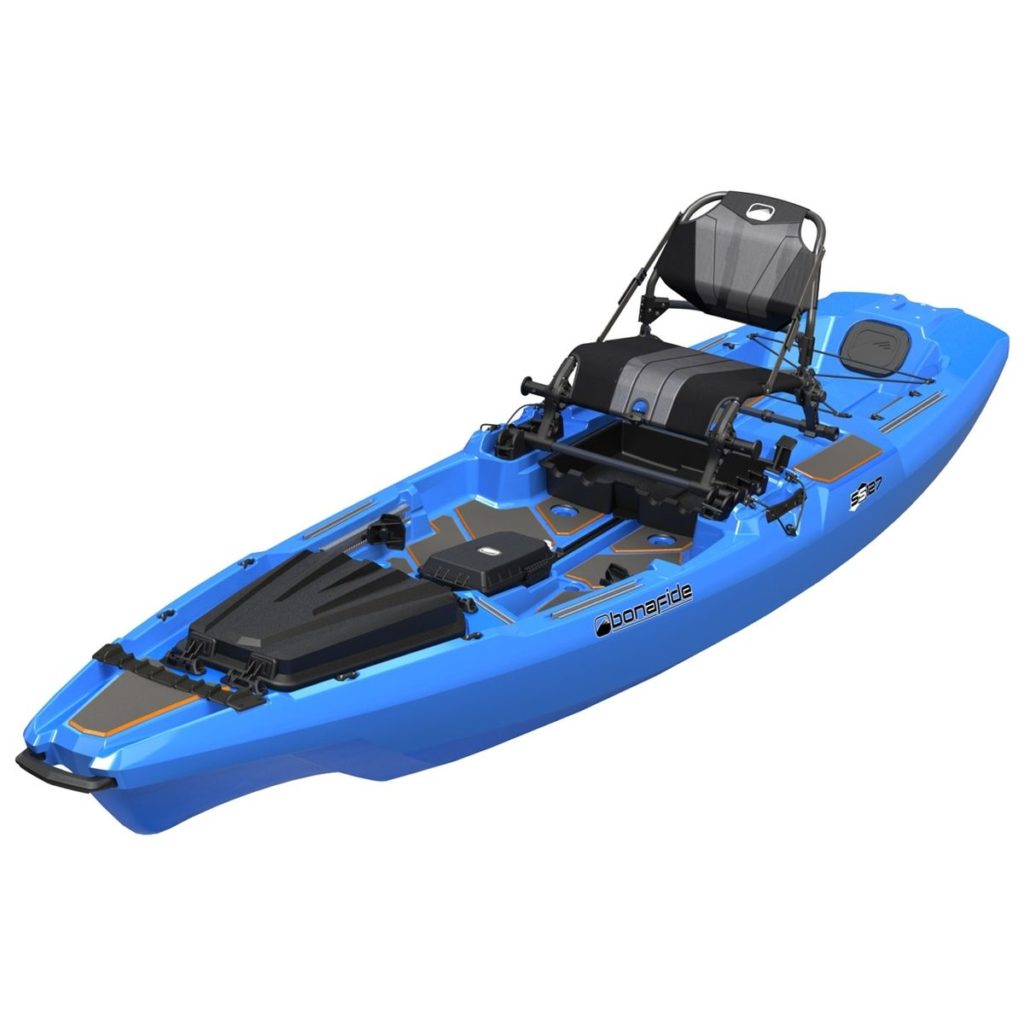 Paddle Power
Paddle Power
Good stability, 94-pound weight, and a great seat make my recommended paddle craft the Bonafide SS 127.
The second choice for me would be the NuCanoe Pursuit. It has fewer features than the SS127 but has stability for days and a really nice swivel seat that makes fishing weird angles a lot easier.
 Pedal Power
Pedal Power
The flagship for pedal power is the Hobie Pro Angler 14. It will most likely need a trailer but once you’re on the water, it’s luxury in every area (as long as you don’t have to paddle it).
The darkhorse for this category is one that is new to the market, the 2019 Hobie Outback. It is 103 pounds, has the Mirage Drive for propulsion, offers good stability and has a pretty good seat. This is the perfect option for those that want a well-equipped kayak with pedals that don’t need to stand all the time.
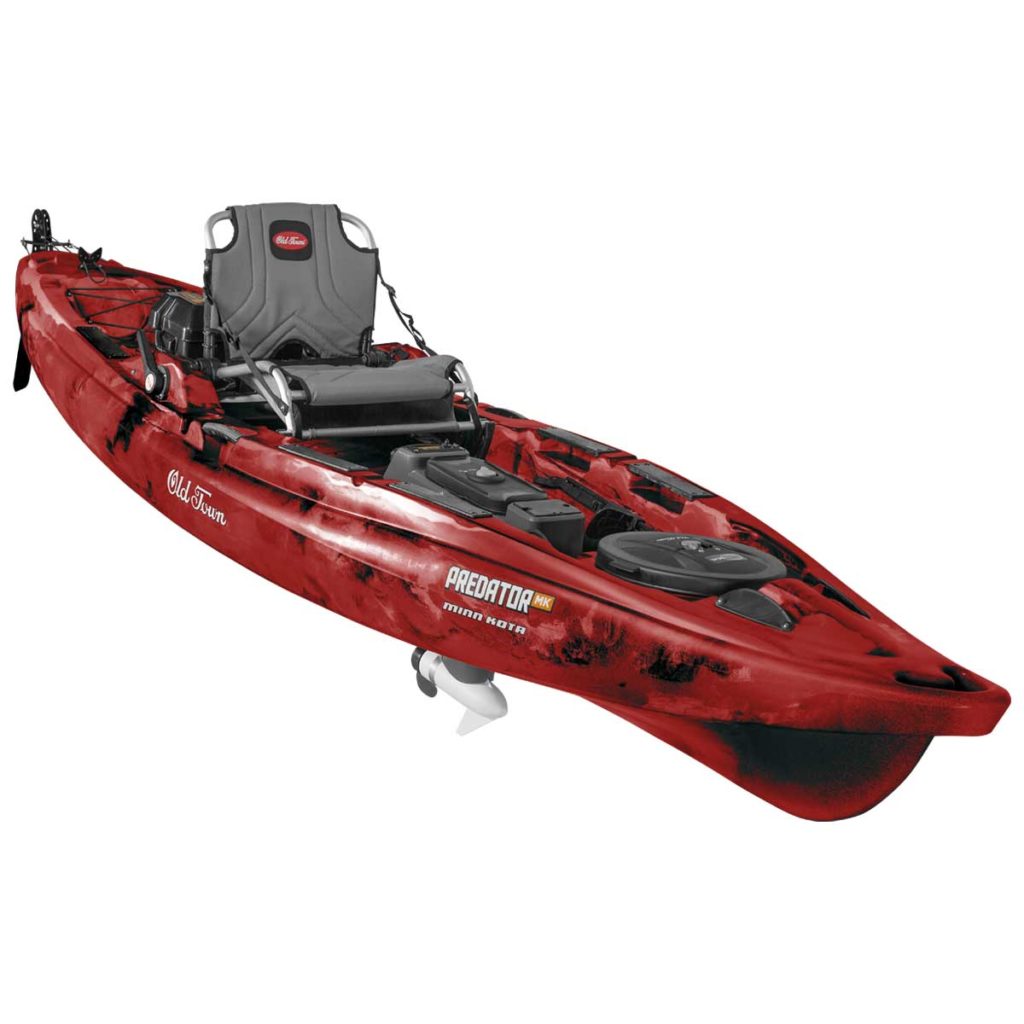 Motorized Kayaks
Motorized Kayaks
Many of the kayaks mentioned here today can work with a motor. The NuCanoes come with a stern ready for a clamp on motor and not much else needed. Other kayaks not as much. There are a few kayaks that come motor installed and of those, the Old Town Predator MK is the leader in the clubhouse. It also comes in a pedal drive version (PDL) if you’d like to go that direction. They are a bit heavy at 118 pounds so a trailer is going to be a needed add on for most folks.
Our List of Recommended Kayaks for Anglers Over 40 Years Old
Hobie Pro Angler 14 $3,649 – $3,849
| Length: | 13 ft 8 in / 4.17 m |
| Width: | 38 in / 96.52 cm |
| Weight: | 144.5 lb / 65.54 kg |
| Capacity: | 600 lb / 272.16 kg |
Bonafide SS127 $1,599
| Length: | 12 ft 7 in / 3.84 m |
| Width: | 33.75 in / 85.73 cm |
| Weight: | 94 lb / 42.64 kg |
| Capacity: | 475 lb / 215.46 kg |
NuCanoe Pursuit $1,699
| Length: | 13 ft 6 in / 4.11 m |
| Width: | 35 in / 88.9 cm |
| Weight: | 82 lb / 37.19 kg |
| Capacity: | 500 lb / 226.8 kg |
Native Titan 13.5 $3,099
| Length: | 13 ft 6 in / 4.11 m |
| Width: | 41.5 in / 105.41 cm |
| Weight: | 178 lb / 80.74 kg |
| Capacity: | 500 lb / 226.8 kg |
NuCanoe Frontier 12 $1,599
| Length: | 12 ft / 3.66 m |
| Width: | 41 in / 104.14 cm |
| Weight: | 77 lb / 34.93 kg |
| Capacity: | 650 lb / 294.84 kg |
Diablo Amigo $999
| Length: | 12 ft 8 in / 3.86 m |
| Width: | 38 in / 96.52 cm |
| Weight: | 75 lb / 34.02 kg |
| Capacity: | 600 lb / 272.16 kg |
Jackson Big Rig $1,599
| Length: | 13 ft2 in / 4.01 m |
| Width: | 38 in / 96.25 cm |
| Weight: | 93 lb / 42.72 kg |
| Capacity: | 450 lb / 201.78 kg |
Hobie Outback (2019) $2,799-$2,949
| Length: | 12 ft 9 in / 3.89 m |
| Width: | 34 in / 86.36 cm |
| Weight: | 103 lb / 46.72 kg |
| Capacity: | 425 lb / 192.78 kg |
Old Town Predator MK $2,999
| Length: | 13 ft 2 in / 4.01 m |
| Width: | 36 in / 91.44 cm |
| Weight: | 117.5 lb / 53.3 kg |
| Capacity: | 600 lb / 272.16 kg |
4 thoughts on “Kayak Buying Guide for Anglers Over 40”
Comments are closed.

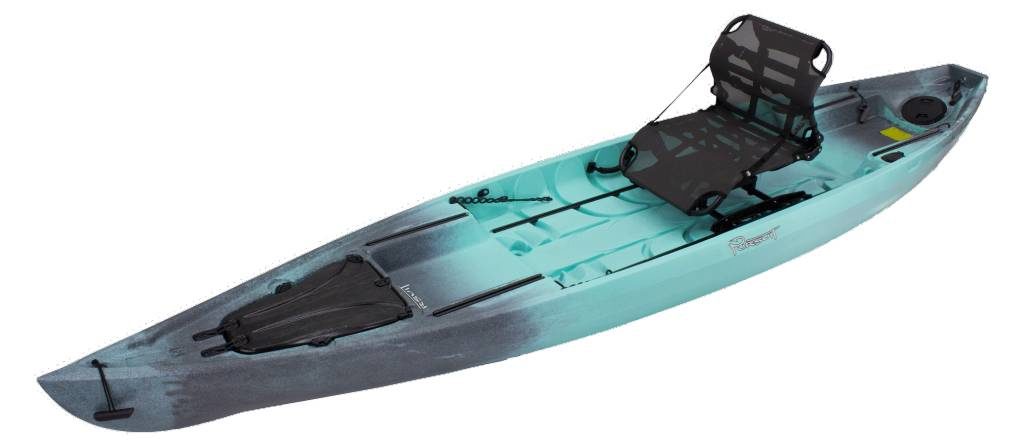
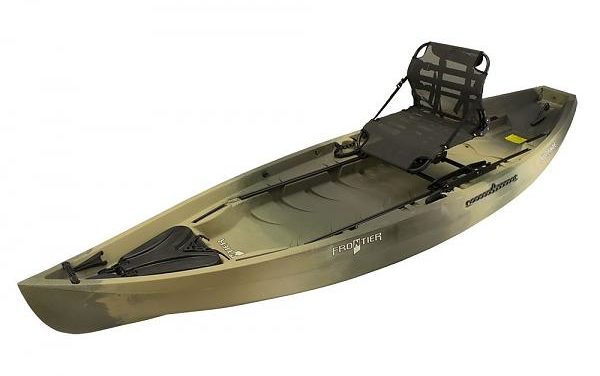
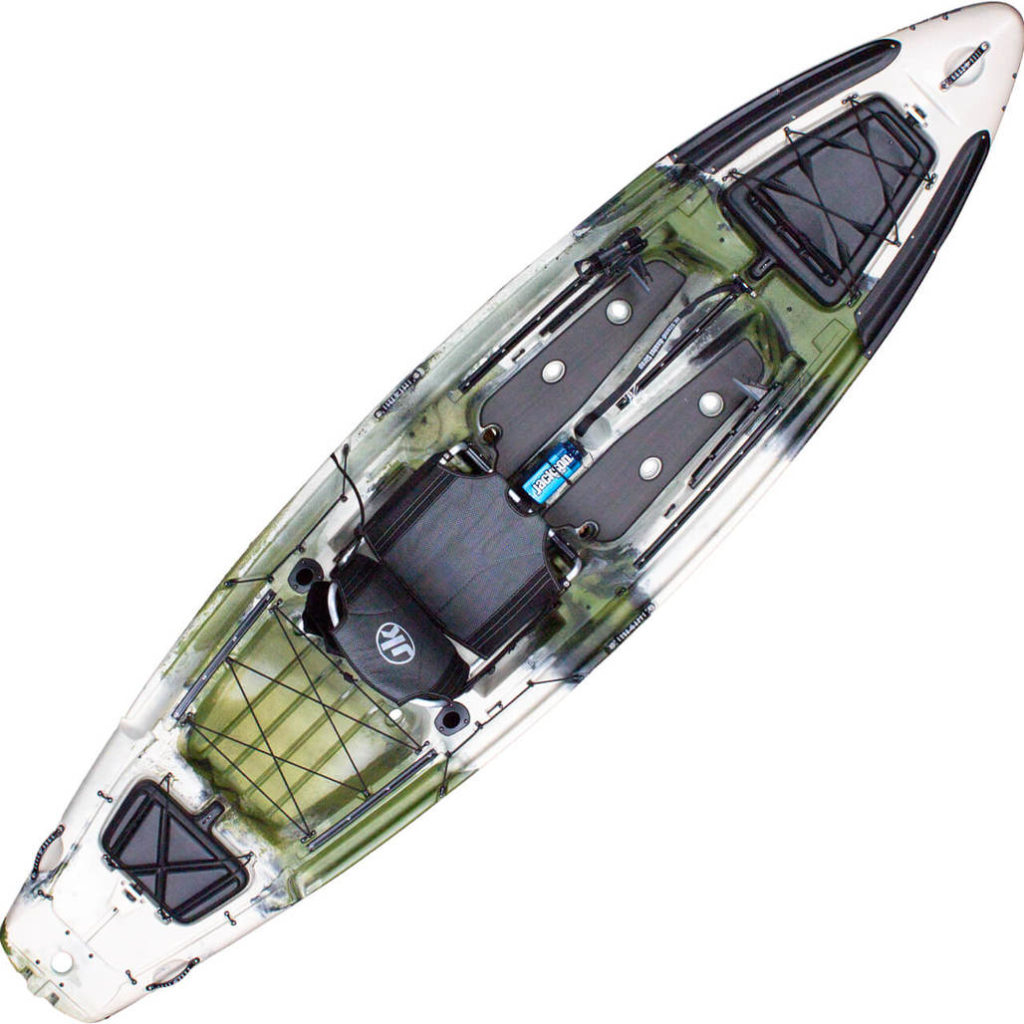

Good review and recommendations but what about the ones you don’t sell. Feelfree, Pelican, etc.
I don’t sell any kayaks. FeelFree and Pelican don’t rate above any I put on the list based on those criteria.
I enjoyed the reviews and I agree with your comments.
I’m in the process of getting a peddle kayak this spring ( my first kayak ).
I also have a bass boat.
I’m curious if you tried the new Wilderness Helix PD .
I like the kayak but I have read about issues with play in the drive and squeaking noise.
I also read that the main shaft is a little week .
I have narrowed my decisions to the Outback or Wilderness 115.
Thank you,
Bill
I have tried the Helix and wasn’t impressed. The Native and Hobie drives are much more rugged and stable in my opinion. The Ride 115 is a great boat that has been around a long time and for a reason.